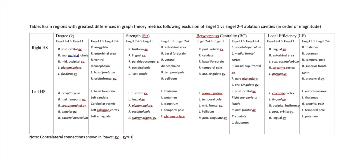Changes In Whole Brain Connectomes With Simulated Laser Interstitial Thermal Therapy Using Seizure-Free and Non-Seizure-Free Ablation Cavities in Mesial Temporal Sclerosis: A Graph Theory Approach
Abstract number :
2.175
Submission category :
5. Neuro Imaging / 5A. Structural Imaging
Year :
2018
Submission ID :
501557
Source :
www.aesnet.org
Presentation date :
12/2/2018 4:04:48 PM
Published date :
Nov 5, 2018, 18:00 PM
Authors :
Vejay N. Vakharia, University College London; Matteo Mancini, Wellcome EPSRC Centre for Interventional and Surgical Sciences (WEISS), University College London, London, UK; Sjoerd B. Vos, Centre for Medical Image Computing, University College London; Epil
Rationale: Laser interstitial thermal therapy (LITT) is a novel means of creating a focal lesion of variable diameter within deep intracerebral structures. LITT ablation cavity morphology can be modulated in real-time utilizing MR-thermography. Seizure-free outcomes following LITT for mesial temporal sclerosis (MTS) approach those of conventional open mesial temporal resections. Improved seizure-free outcome has been associated with the extent to which the mesial hippocampal head is included within the ablation cavity, but not with overall ablation volume. This leads to question whether specific changes in whole brain structural connectivity exist between patients that do and do not achieve seizure freedom. If such changes can be identified, these may guide patient-specific ablation cavity morphology modelling and potentially aid in prognostication. Methods: Twenty five patients with MTS that had undergone LITT with 2 year seizure outcome based on a modified Engel score were identified. Non-linear registrations of post-operative imaging to template space were performed and the ablation cavities were manually segmented. Ablation cavities from the 11 patients that achieved seizure freedom and 14 patients that achieved seizure freedom were combined and a threshold of 1 S.D was applied to generate a seizure -free and non-seizure group templates mask. In 12 separate preoperative patients with MTS (6 right) from another institution, weighted normalized whole brain connectomes were generated with 10 million streamlines from diffusion data between cortical regions of interest (ROIs), as defined by whole brain GIF parcellations. Patients with right and left MTS were analyzed separately. To simulate ablations the group cavity masks from seizure-free and non-seizure-free patients were selectively excluded from preoperative whole brain connectomes prior to normalization. Differences in structural connectivity between seizure-free and non-seizure-free connectomes were assessed by graph theory metrics. Results: See table Conclusions: Differences in structural connectivity are present following simulated LITT for MTS between seizure-free and non-seizure-free template ablation cavities. Greater node strength in non-seizure-free patients were present in the ipsilateral basal temporo-occipital cortices (fusiform and lingual gyri and occipital pole) in both right and left MTS. Nodes in which strength and local efficiency were relatively maintained in seizure-free cavities may represent connections that dampen the seizure network. The ipsilateral thalamic connections may play a role in this regard. BC measures in non-seizure-free MTS patients were greater in ipsilateral temporal poles in right and left MTS; highlighting this as a residual element in the epileptogenic network. These results elude to the potential that LiTT ablation cavities may be pre-operatively modelled on a patient specific basis, using whole brain connectomes, to ensure the ablation cavity includes important structures and non-essential or inhibitory connectivity is spared. Validation from post-LiTT structural connectomes is required. Funding: This publication represents in part independent research commissioned by the Health Innovation Challenge Fund (WT106882), a parallel funding partnership between the Wellcome Trust and the Department of Health, and the National Institute for Health Research University College London Hospitals Biomedical Research Centre (NIHR BRC UCLH/UCL High Impact Initiative). This work was undertaken at University College London Hospitals, which received a proportion of funding from the Department of Health's NIHR BRC funding scheme.

.tmb-.jpg?Culture=en&sfvrsn=e579d936_0)